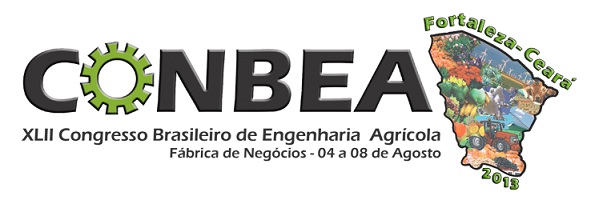Ver ítem
- xmlui.general.dspace_homeCentros e Institutos de InvestigaciónCIA. Centro de Investigaciones de AgroindustriaInstituto de Ingenieria RuralPresentaciones a Congresosxmlui.ArtifactBrowser.ItemViewer.trail
- Inicio
- Centros e Institutos de Investigación
- CIA. Centro de Investigaciones de Agroindustria
- Instituto de Ingenieria Rural
- Presentaciones a Congresos
- Ver ítem
Caracterización de un sistema de pulverización con gotas muy finas (niebla) destinadas al control de polvo en granos
Resumen
Cuando los granos se manipulan mecánicamente se generan nubes de polvo provenientes de las partículas depositadas sobre su superficie. Las concentraciones de polvo en el aire constituyen un riesgo potencial, afectando la salud de las personas y el ambiente. Los métodos comunes para su control son los sistemas de aspiración y la aplicación de aditivos en base a aceite. También se ha empleado la pulverización con agua fraccionada en finas gotas para su
[ver mas...]
Cuando los granos se manipulan mecánicamente se generan nubes de polvo provenientes de las partículas depositadas sobre su superficie. Las concentraciones de polvo en el aire constituyen un riesgo potencial, afectando la salud de las personas y el ambiente. Los métodos comunes para su control son los sistemas de aspiración y la aplicación de aditivos en base a aceite. También se ha empleado la pulverización con agua fraccionada en finas gotas para su control. Estos sistemas de niebla podrían ser un método alternativo eficaz. El objetivo del presente trabajo fue determinar el caudal real de dos boquillas y el alcance efectivo de la pluma de pulverización. El caudal se determinó por diferencia de peso entre el volumen erogado y el remanente del depósito. El alcance de la pluma de pulverización se cuantificó, sobre el mayor caudal, mediante el uso de tarjetas hidrosensibles. Los resultados muestran que el incremento del caudal no guarda relación directa con la presión. Del análisis de varianza efectuado sobre las coberturas logradas a 280 kPa de presión, surgen diferencias significativas las cuales evidencian que la pluma de pulverización generada con la boquilla TeeJet XR 11008 alcanza una distancia de 4,3 m, mientras que la correspondiente a la boquilla TeeJet TK 50678-10 SS no supera los 2,9 m.
[Cerrar]
When grains are mechanically manipulated dust clouds are generated from the particles deposited on its surface. Concentrations of dust in the air are a potential risk, affecting people´s health as well as the environment. Most common methods for controlling this problem are suction systems and the spraying of oil based additives. Another method, which has also been used, consist on the spraying of water fractionated into fine droplets. These fog systems
[ver mas...]
When grains are mechanically manipulated dust clouds are generated from the particles deposited on its surface. Concentrations of dust in the air are a potential risk, affecting people´s health as well as the environment. Most common methods for controlling this problem are suction systems and the spraying of oil based additives. Another method, which has also been used, consist on the spraying of water fractionated into fine droplets. These fog systems would be an effective alternative method. The aim of this study was to determine the real flow rate of two
nozzles and the effective smoke plume of the spraying. The flow rate was determined by weight
difference between the amount of water applied and the water left in the deposit. The smoke plume
volume of the spraying was quantified on the maximum flow through the use of water-sensitive
cards. The results show that the increase of the flow rate is not directly related to the pressure. The
analysis of variance related to coverages achived at 280 kPa of pressure showed statistical differences. These results prove that smoke plume generated with the spray nozzle TeeJet XR 11008 reaches a distance of 4.3 m, while the nozzle corresponding to the SS 50678-10 TeeJet TK does not exceed 2, 9 m.
[Cerrar]

Fuente
42 Congresso Brasileiro de Engenharia Agrícola, Fortaleza, Brasil, 4 a 8 de Agosto de 2013
Fecha
2013-08
Editorial
Associação Brasileira de Engenharia Agrícola
Formato
pdf
Tipo de documento
documento de conferencia
Palabras Claves
Derechos de acceso
Abierto
 Excepto donde se diga explicitamente, este item se publica bajo la siguiente descripción: Creative Commons Attribution-NonCommercial-ShareAlike 2.5 Unported (CC BY-NC-SA 2.5)
Excepto donde se diga explicitamente, este item se publica bajo la siguiente descripción: Creative Commons Attribution-NonCommercial-ShareAlike 2.5 Unported (CC BY-NC-SA 2.5)


